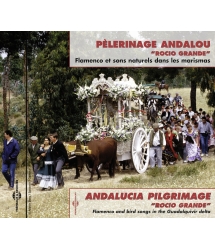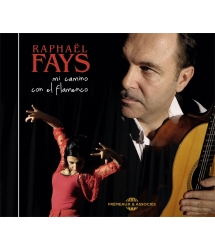- Our Catalog
- Philosophy
- Philosophers of the 20th century and today
- History of Philosophy (PUF)
- Counter-History and Brief Encyclopedia by Michel Onfray
- The philosophical work explained by Luc Ferry
- Ancient thought
- Thinkers of yesterday as seen by the philosophers of today
- Historical philosophical texts interpreted by great actors
- History
- Books (in French)
- Social science
- Historical words
- Audiobooks & Literature
- Our Catalog
- Jazz
- Blues
- Rock - Country - Cajun
- French song
- World music
- Africa
- France
- Québec / Canada
- Hawaï
- West Indies
- Caribbean
- Cuba & Afro-cubain
- Mexico
- South America
- Tango
- Brazil
- Tzigane / Gypsy
- Fado / Portugal
- Flamenco / Spain
- Yiddish / Israel
- China
- Tibet / Nepal
- Asia
- Indian Ocean / Madagascar
- Japan
- Indonesia
- Oceania
- India
- Bangladesh
- USSR / Communist songs
- World music / Miscellaneous
- Classical music
- Composers - Movie Soundtracks
- Sounds of nature
- Our Catalog
- Youth
- Philosophy
- News
- How to order ?
- Receive the catalog
- Manifesto
- Dictionnary











- Our Catalog
- Philosophy
- Philosophers of the 20th century and today
- History of Philosophy (PUF)
- Counter-History and Brief Encyclopedia by Michel Onfray
- The philosophical work explained by Luc Ferry
- Ancient thought
- Thinkers of yesterday as seen by the philosophers of today
- Historical philosophical texts interpreted by great actors
- History
- Books (in French)
- Social science
- Historical words
- Audiobooks & Literature
- Our Catalog
- Jazz
- Blues
- Rock - Country - Cajun
- French song
- World music
- Africa
- France
- Québec / Canada
- Hawaï
- West Indies
- Caribbean
- Cuba & Afro-cubain
- Mexico
- South America
- Tango
- Brazil
- Tzigane / Gypsy
- Fado / Portugal
- Flamenco / Spain
- Yiddish / Israel
- China
- Tibet / Nepal
- Asia
- Indian Ocean / Madagascar
- Japan
- Indonesia
- Oceania
- India
- Bangladesh
- USSR / Communist songs
- World music / Miscellaneous
- Classical music
- Composers - Movie Soundtracks
- Sounds of nature
- Our Catalog
- Youth
- Philosophy
- News
- How to order ?
- Receive the catalog
- Manifesto
- Dictionnary
YEPES • ARGENTA ALICIA DE LARROCHA • NIÑA DE LOS PEINES • MILES DAVIS • MANOLO CARACOL • LOLITA TRIANA & ROQUE MONTOYA • JOHN COLTRANE
Ref.: FA5789
Artistic Direction : TECA CALAZANS ET PHILIPPE LESAGE
Label : Frémeaux & Associés
Total duration of the pack : 3 hours 42 minutes
Nbre. CD : 3
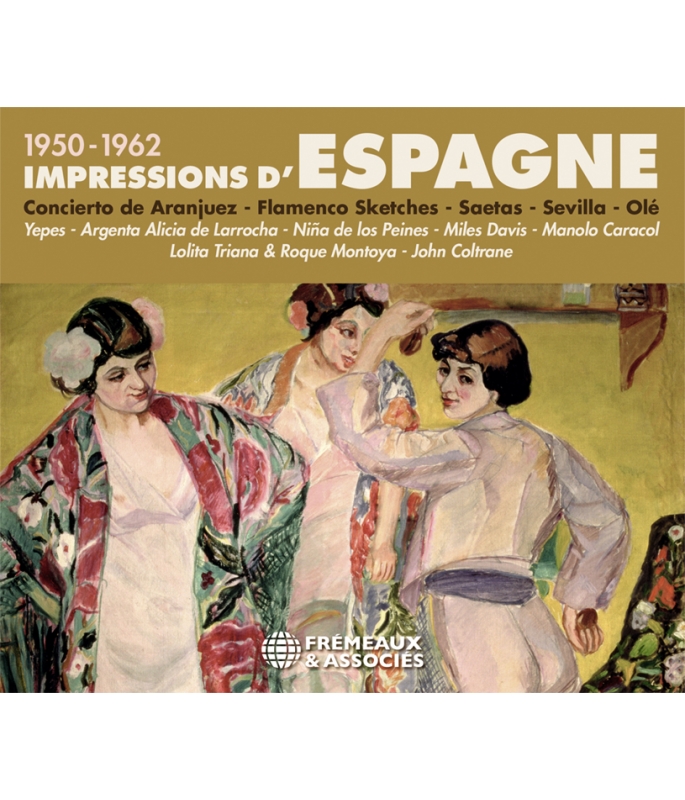
YEPES • ARGENTA ALICIA DE LARROCHA • NIÑA DE LOS PEINES • MILES DAVIS • MANOLO CARACOL • LOLITA TRIANA & ROQUE MONTOYA • JOHN COLTRANE
YEPES • ARGENTA ALICIA DE LARROCHA • NIÑA DE LOS PEINES • MILES DAVIS • MANOLO CARACOL • LOLITA TRIANA & ROQUE MONTOYA • JOHN COLTRANE
If this anthology has the title “Impressions of Spain” it is because it is a symbolic commentary on the country. Its source is the secular history of the songs and dances of the Spanish people, a history perpetuated throughout the 20th century, not only by artists in Andalusia and the other regions, and by Hispanic composers in the world of classical music, but also in the eyes of French composers and a few jazz musicians.
Teca CALAZANS et Philippe LESAGE
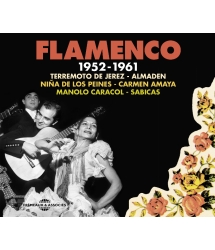
TERREMOTO DE JEREZ - EL NINO DE ALMADEN • NIÑA DE LOS...
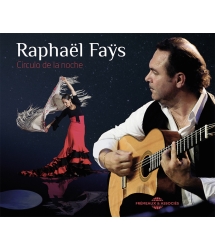
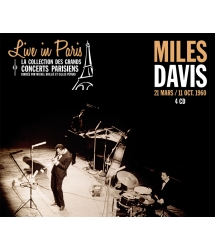
LIVE IN PARIS - 21 MARS / 11 OCTOBRE 1960
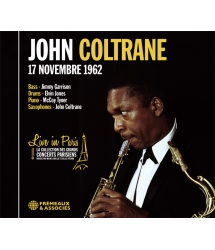
17 NOVEMBRE 1962




-
PisteTitleMain artistAutorDurationRegistered in
-
1EvocacíonAlicia de LarrochaIsaac Albéniz00:05:332021
-
2PreludioAlicia de LarrochaIsaac Albéniz00:06:232021
-
3Concerto de Aranjuez (Allegro Con Spirito)Narciso YepesJoaquin Rodrigo00:05:592021
-
4Concerto de Aranjuez (Adagio)Narciso YepesJoaquin Rodrigo00:10:022021
-
5Concerto de Aranjuez (Allegro Gentile)Narciso YepesJoaquin Rodrigo00:05:252021
-
6Danse Espagnole N° 5José IturbiEnrique Granados00:03:582021
-
7Danza de la Vida BreveMagda TagliaferroManuel de Falla00:03:022021
-
8Will o' The WispMiles DavisManuel de Falla00:03:502021
-
9Preludio In e MajorJulian BreamFederico Moreno Torroba00:01:532021
-
10Danse Espagnole N° 12José IturbiEnrique Granados00:05:442021
-
11Fandango del CandilAlicia de LarrochaEnrique Granados00:05:292021
-
12Danza Española N° 10Narciso YepesEnrique Granados00:03:532021
-
13The Maids Of CadizMiles DavisLéo Delibes00:03:412021
-
14Alborada del GraciosoAndré CluytensMaurice Ravel00:07:382021
-
PisteTitleMain artistAutorDurationRegistered in
-
1EspañaAtaulfo ArgentaEmanuel Chabrier00:06:272021
-
2Dat's Love HabaneraMarilyn HorneGeorges Bizet00:03:452021
-
3Flamenco SketchesMiles DavisMiles Davis00:09:272021
-
4Ripe Grapes (Street Cries)Alan LomaxInconnu Unknown00:01:062021
-
5Tiro Pedra por la CalleManolo CaracolEnrique El Mellizo00:03:192021
-
6Malagueña del MellizoPericon de CadizEnrique El Mellizo00:02:342021
-
7Con el Fandango OrgullosoLa Niña de los PeinesTorres y Molina00:01:202021
-
8LeyendaNarciso YepesIsaac Albéniz00:06:082021
-
9Rumores de la GalettaNarciso YepesIsaac Albéniz00:03:142021
-
10SoleaMiles DavisGil Evans00:12:182021
-
11Nuits Dans Les Jardins D'EspagneGonzalo SorianoManuel de Falla00:09:242021
-
12Concierto de AranjuezMiles DavisJoaquin Rodrigo00:16:242021
-
13Motivos ArabesSabicasAgustín Castellón Campos00:02:482021
-
PisteTitleMain artistAutorDurationRegistered in
-
1ZortzikoDeux TxistusTraditionnel00:00:532021
-
2AradaVoix d'hommesTraditionnel00:03:212021
-
3CorridoVoix de femmes et panderataTraditionnel00:02:052021
-
4Foliada de RiotortoChoeur mixtesTraditionnel00:01:362021
-
5Santa AguedaChoeur masculinTraditionnel00:02:452021
-
6Mis Dicas No Eram NaManolo CaracolTraditionnel00:02:052021
-
7SaetasRoque MontoyaTraditionnel00:09:052021
-
8El PoloNiño de AlmadenTraditionnel00:02:522021
-
9MarianasBernardo el de los LobitosTraditionnel00:03:102021
-
10SolearesSabicasAgustín Castellón Campos00:03:092021
-
11FandanguilloNarciso YepesJoaquin Turina00:04:452021
-
12JerezAlicia de LarrochaIsaac Albéniz00:08:392021
-
13SevillaJosé IturbiIsaac Albéniz00:04:032021
-
14SaetaMiles DavisGil Evans00:05:102021
-
15OléJohn ColtraneJohn Coltrane00:18:142021
Impressions of Spain
1950 - 1962
Impressions of Spain
Three little notes and a simple, repeated motif suffice: listeners will instinctively recognise a musical theme from Spain. This anthology has the straightforward aim of pointing to the common denominator, unfolding like a simple guideline between the melodies of flamenco singers, the works of composers at the turn of the last century, and Spanish-sounding versions by jazz musicians. All of them drew inspiration and their impressions of Iberia from the secular history of the country’s popular songs and dances.
Popular roots
The music of the people – popular music – inhabits everyday life. It is present in its days and nights, in dramas and joys, and heartaches, in tilling the soil, in the song of the muleteer or a grocer’s verbal onslaught, in Sunday feasts and the celebrations of the Passion of Christ during Holy Week in Seville. With two magnificent anthologies that appeared between 1954 et 1960, the label Hispavox produced an exceptional musicological work to which the American Alan Lomax contributed field-recordings made when was travelling through Spain between 1954 and 1958 (cf. Ripe Grapes).
The Hispavox folk anthology
The above set of traditional Spanish music appeared in 1960, with recordings of popular songs by non-professional singers. These were the results of several years spent crisscrossing the country from north to south to capture – sometimes in precarious conditions – the singular colours that these songs acquired when performed in their own habitat by populations who had been singing them for centuries. In this recorded translation of Spanish “feeling” right in the middle of the 20th century, you can measure the influence left behind by successive migrations from Europe and Africa, and that exodus also left Hispanic cultural traces as far as South America.
From that sublime anthology consisting of four LP records, we have taken two tunes from the Basque provinces, two from the region of Salamanca, and a foliada from Galicia, to which we added an Andalusian martinete by the great gypsy singer Manolo Caracol. The martinete derives its name from a blacksmith’s accompaniment of his bitter, solitary singing at his forge, rhythmically beating his hammer on the anvil. Zortziko is a Basque dance whose name means “in eight”, a reference to the original poem’s metre, set to music in bars of five beats. The tune here is an instrumental duo played on two txistus (a typical Basque instrument resembling a pipe or recorder) accompanied by tambourines. Just as strange is Santa Agueda, in which groups of young men with makillas (sticks) beat the ground in rhythm as they beg for food during the religious festival that Basques celebrate on February 5. Arada, a song from Leon province, accompanies fieldworkers, while Corrido (from the same region) is a dance in which a young girl sings and chants two airs in succession over the sound of a tambourine known as a panderata. The Foliada do Riotorto from Galicia is a festive chorale of boys and girls accompanied by the gaïta bagpipe, the Basque drum and the typical Galician conchas or shells, rubbed against each other.
Anthologies devoted to Flamenco
In 1954 Hispavox introduced its Antologia del Cante Flamenco, a magnificent production that offered an exemplary survey of flamenco from its origins to the Fifties. This set of records gave flamenco legitimacy as the expression of a collective tradition that transported an ideal. In the hands of musicologist Tomas de Andrade and the musician Paco del Valle (1894-1964), better known in the flamenco world as the guitarist Perico el del Lunar, singers born at the end of the 19th century (like Bernardo el de los lobitos, 1887-1969) found themselves alongside men in their thirties like Roque Montoya (1925-1995). Over eight days and nights, an ideal climate was re-created in a Madrid studio to allow them to express the native eloquence of flamenco. The producers even went so far as to record a band of cornetas y tambores as they paraded outdoors, in order to reproduce as closely as possible the impassioned sound of the saeta that can be heard in Seville during the city’s Semana Santa, or Holy Week.
As for Manolo Caracol (Manuel Ortega Juarez), he was at the peak of his artistry. Born into a large gypsy family, he had a superb, hoarse afillá voice, and in 1958 embarked on an ambitious project led by musicologist Manuel Garcia Marcos. For Una Historia del Cante Flamenco, Caracol took up all the fundamental songs in the repertoire, accompanied by guitarist Melchor de Marchena.
The latter was also the accompanist of the cantaora Niña de los peines (Pastora Pavon Cruz), the greatest singer of all time, who was born in Triana, Seville, in 1890 (she died in 1969). Born in poverty to gypsy parents, Niña was illiterate and became a friend of Manuel de Falla and Federico Garcia Lorca, to whom she paid hommage at a tribute-concert she gave in Madrid on August 19, 1937, after the poet was assassinated by the Franco regime’s forces.
Only one thing is certain when it comes to the roots and essence of flamenco: this music genre introduced by the “little people” of the countryside, mountains and poor neighbourhoods of Seville, was born out of the meeting of Orient and Occident in the land of Andalusia, a cultural melting-pot where gypsy immigrants from India settled in the 16th century amid a crossbreed mix of Iberians and Arabs. So it is not the whole truth to say that flamenco is associated with gypsies alone. Perpetuating itself in the cries and shouts of everyday life (cf. the fruit vendor in the track Ripe Grapes) and in the sounds heard on feast-days, flamenco has never lost its purity and assimilated everything its spirit has been able to absorb. To pierce the secret of its codes, music-lovers must apply themselves to the timbre of flamenco voice, to the emotion that wells up in a primal cry; and they must privilege the rhythmical sensitivity of the tocaores, those who play the guitarra flamenca, a thinner and lighter feeling, but whose dynamics are more violent, as proved by Sabicas (b. 1912 – d. 1990). A few musicological terms: the palos or cantes are articulated around rhythms that are binary – rumbas, tangos, tientos – or ternary, such as the soleas, bulerias, fandangos (including the malagueñas) and siguiriyas.
The Hispavox anthology of flamenco shimmers in the heat generated by the sun over Andalusia, and its brightness would even strike Miles Davis and Gil Evans. With Saeta, Miles’ trumpet tears our soul apart in reproducing the moans and melodies of singers Lolita Triana and Roque “Jarrito” Montoya. It’s enthralling to confront the two versions.
Andalusia’s omnipresence in our memories
The most obvious aspect of any musical watercolour of Spain is the omnipresence of Andalusia. Its very essence, its sounds, rhythms and melodies, its vocal timbres and scansion, the rasgueados from the flamenco guitar, the zapateados in the dances, the handclaps… all of that has insinuated itself into not only the minds of Spanish composers such as Albeniz, de Falla, Granados or Turina, but also those of their counterparts in France – Ravel, Bizet, Chabrier, Delibes – and the greatest jazz musicians, among them Miles Davis, Gil Evans, John Coltrane, Charlie Haden and Chick Corea.
Spanish classical composers
Whether distantly (like Albeniz, who fantasised that France was his motherland) or more closely like Manuel de Falla (born in Cadiz), the greatest Spanish composers have expressed the soul of Andalusia while avoiding facility and the picturesque. Here follows a brief biography of some of the principal composers of the 20th century together with their musical signatures.
Who better than music-lover and philosopher Vladimir Jankelévitch to describe the innovative dimension of Isaac Albeniz (1860-1909) in his Suite Española, in the Recuerdos de Viaje or, even more so, in the four Books of Iberia? All of which are essentially an evocation of Andalusia. Albeniz seems to have been considered a prodigious pianist, and as a young man he undertook a two-year voyage from New York to Rio de Janeiro before attending the Brussels Conservatory where he studied under Felipe Pedrell. The latter would hand down his knowledge of Spain’s popular rhythms and melodies. Writing music that approached that of a Debussy in harmony – Albeniz was close to him for some two decades – Isaac, according to de Falla, “musically purified the popularly-inspired motifs he used, and ennobled them morally.” Evocacion opens the cycle of Iberia’s four Books by marking the Arab-Andalusian influence, whereas Asturias, subtitled Leyenda, is reminiscent of a solea. Jerez, taken from Book 4 and magnificently performed by Alicia de Larrocha in 1962, is considered the most difficult of the composer’s works for a pianist to play.
Albeniz would influence Joaquim Turina, but also Manuel de Falla, who was born in 1876 and died in November 1946 in Argentina, completely destitute. Like Albeniz, de Falla studied with Felipe Pedrell, and he lived in Paris from 1907 to 1914. His first phase as a composer embraced Andalusian rhythms and legends: La Vida Breve, El Sombrero de Très Picos (The Three-Cornered Hat, 1917), El Amor Brujo (Love, The Magician, a ballet from 1915). Of his piece for piano and orchestra, Nights in the Gardens of Spain (Noches En Los Jardines de España, 1916) de Falla would say: “It is a symphonic impression.” A fervent Catholic, he also defended the Republic and the Andalusian heritage (creating with Garcia Lorca the Cante Jondo competition in Granada in 1926).
Enrique Granados (b. July 1867 - d. March 1916) drowned in the English Channel on his return from the USA when the steamer on which he was a passenger was sunk by a German submarine. Granados is another inescapable actor in the renaissance of Spanish music that followed the rise in nationalism. Born in Catalonia, and also trained by Pedrell, he enjoyed a brilliant career on which two works put the seal: his Danzas Españolas and his Goyescas (subtitled Los Majos Enamorados or, The Gallants in Love, inspired by Goya’s paintings.)
Often celebrated, yet often also scorned by connoisseurs among music lovers, is Joaquim Rodrigo (1901-1999), who lost his sight at the age of three. Less well-known than the others above, by far his major work remains the Concierto de Aranjuez for guitar and orchestra in D Major, which he composed in 1939 and named after the town in Castille. Rodrigo’s classical eloquence draws its inspiration from Domenico Scarlatti and Padre Antonio Soler.
The French composers
Composers from France seem to have been more attached to paintings that carry the traditional images that are part of Iberian history. Chabrier didn’t innovate and remained on the surface, although not without talent, but gradually he would approach what Bizet would do with Carmen, based on Mérimée. To escape the hackneyed versions of the operatic approach, we thought it preferable to focus on the American transposition, in the setting of the dark world of a tobacco factory during the Second World War, as directed by Otto Preminger. In the film Carmen Jones, the leading roles are played Dorothy Dandridge and Harry Belafonte, but the soundtrack called for more impressive vocalists, notably LeVern Hutcherson (Belafonte’s singing voice), Olga James, Pearl Bailey and Marvin Hayes. Vocally, the Carmen Jones role was taken by a wonderfully insolent and sensual Marilyn Horne, aged a mere twenty at the time yet promised a handsome future on the greatest opera stages in the world. Ravel, born a Basque, sailed towards other horizons with an Impressionist palette that de Falla wouldn’t have disdained, as you can hear if you compare Ravel’s Alborada del gracioso with Nights in the Gardens of Spain. And what can be said of Gil Evans, who adored the Impressionist colours of Ravel and Debussy? He arranged Léo Delibes’ Maids Of Cadiz for Miles Davis with the same approach to harmony and gave the trumpeter a perfect setting; his version alongside Ravel’s work deserves its place in closing the set’s first disc.
Spain through the eyes of jazz
The popular expressiveness of flamenco, and its sense of tragedy with no unhealthy interest associated, are what attract jazz musicians to the genre. In Olé, John Coltrane contents himself with an examination of modal composing. The repetitive dimension and its loops make the long hypnotic development spellbinding. Miles Davis and brother-in-arms Gil Evans took more than a firm hold on Iberia with their album Sketches Of Spain, which is no less than a masterpiece. It provides a personal reading of the Concierto d’Aranjuez, a version that was widely accepted but disowned by composer Joaquim Rodrigo. Their album is also thrilling through their understanding of the Saeta and the Solea, which breaks the rules in going back innocently to the intangible codes of flamenco. It is literally poignant. If music critic Franck Bergerot is to be believed, Miles and Gil Evans didn’t know of its existence until later. And with Flamenco Sketches, a track from the Davis album Kind Of Blue, made in the company of John Coltrane, Cannonball Adderley, Bill Evans, Paul Chambers and Jimmy Cobb, the trumpeter took his first steps towards recording Sketches Of Spain, a pinnacle for lovers of jazz and Spain.
Teca Calazans et Philippe Lesage
Adapted from the French text by Martin Davies
© 2021 Frémeaux & Associés
DISCOGRAPHIE
Impressions d’Espagne
(1950 - 1962)
CD1
1) Evocacíon (Albeniz) 5’31
Alicia de Larrocha (piano) - LP Iberia, livre I - Hispavox - HH 1089.90 Octobre 1962
2) Preludio (Asturias) (Albeniz) 6’21
Alicia de Larrocha - (Piano) - LP Isaac Albeniz : Obras para Piano - Cantos de España - Hispavox, 1959
3) Concerto de Aranjuez (Allegro con Spirito) (Joaquim Rodrigo) 5’59
4) Concerto de Aranjuez (Adagio) 10’02
5) Concerto de Aranjuez (Allegro Gentile) 5’23
Narciso Yepes (guitare) et Orchestre National d’Espagne sous la direction de Ataulfo Argenta
Decca SXL 2.091 - 1957
6) Danse Espagnole N° 5 Andaluzia (Granados) 3’56
José Iturbi (piano) - Columbia SAXF 106 - Janvier 1959
7) Danza de la Vida Breve (Manuel de Falla) 3’00
Magda Tagliaferro (piano) - Ducretet - Thomson 300 C114 - Mai 1962
8) Will O’ The Wisp (El Amor Brujo) (Manuel de Falla) 3’48
Miles Davis, arranged and conducted by Gil Evans - LP Sketches of Spain, Columbia - CS 8271 - Mars 1960
9) Preludio in E Major (Torroba) 1’51
Julien Bream (guitare) - Westminster XWN 18. 137 B / Septembre 1955
10) Danse Espagnole n° 12 (Granados) 5’42
José Iturbi (piano) - Columbia SAXF 106 - janvier 1959
11) Fandango del Candil (Granados) 5’27
Alicia de Larrocha (piano) - LP Los Majos Enamorados - Hispavox –HH 1084-85-1961
12) Danza Española n° 10 (Granados) 3’51
Narciso Yepes (guitare) - Decca 215 076 / 1954
13) The Maids Of Cadiz - (Leo Delibes) 3’39
Miles Davis, arranged and directed by Gil Evans - LP Miles Ahead - Columbia CL 1041 - 6 mai 1957
14) Alborada del Gracioso (Ravel) 7’38
Orchestre de la Radiodiffusion Française sous la direction de André Cluytens - Pathé-Marconi
EMI 1552723 - Octobre 1962
CD2
1) España (Chabrier) 6’25
London Symphony Orchestra, direction Ataulfo Argenta - Decca SXL 20-20 - Décembre 1956
2) Dat’s Love (Habanera) (Bizet) 3’43
Marilyn Horne - LP Carmen Jones - RCA - ARL 1-OO46 - 1954
3) Flamenco Sketches (Miles Davis) 9’25
Miles Davis (trumpet), Julian « Cannonball » Adderley (alto sax), John Coltrane (tenor Sax), Bill Evans (piano), Paul Chambers, double bass), Jimmy Cobb, (drums) - Août 1959, LP Kind OF Blues - Columbia CS 5163
4) Ripe Grapes (street cries) 1’04
Collectage d’Alan Lomax à Séville - Westminster W-9804 -1954
5) Tiro Pedra por la Calle (soleares de Enrique El Mellizo) 3’17
Manolo Caracol, guitare : Melchior de Marchena « Una Historia del Cante Flamenco » Hispavox HH10-24
6) Malagueña del Mellizo 2’32
Pericon de Cadiz, guitare : Perico El del lunar - Antologia del Cante Flamenco - Hispavox - 1954
7) Con el fandango orgulloso (Callejon, Torres y Molina) 1’18
Fandango de Huelva - Niña de los Peines - Guitare : Melchior de Marchena - La voz de su amo, 7 EPL 13314 - 1950
8) Leyenda (Asturias) (Albeniz) 6’06
Narciso Yepes (guitare) - Decca 215.076 - Avril 1954
9) Rumores de la Galeta (Malagueña) (Albeniz) 3’12
Narciso Yepes (guitare) - Decca 215.076 - Avril 1954
10) Solea (Gil Evans) 12’16
Miles Davis (trumpet), arranged et conducted by Gil Evans, LP Sketches of Spain - CBS 32023 - 1960
11) Nuits dans les Jardins d’Espagne (Au Generalife) (Manuel de Falla) 9’22
Gonzalo Soriano (piano), et Orchestre National d’Espagne ; direction Ataulfo Argenta -Decca SXL 2.091 / 1957
12) Concierto de Aranjuez (Joaquim Rodrigo/ version Miles Davis - Gil Evans) 16’15
Miles Davis (tp, flh)), arranged and conducted by Gil Evans ; Ernie Royal, Bernie Glow, Louis Mucci, Taft Jordan ou Johnny Coles (tp), Dick Hixon, Frank Rehak(tb), Jimmy Buffington, John Barrows, Earl Chapin (cor) ; Jimmy Mc Allister ou Bill Barber (tuba), Al Block, Harold Feldman (fl)Roméo Penque (hautbois),Danny Bank(bcl)Jack Knitzer (basson),Janet Putman (harp),Paul Chambers (b), Jimmy Cobb (dr), Elvin Jones, José Mangual (perc).
Enregistrement novembre 1959, publication : 18 juillet 1960/ LP Sketches of Spain - CBS 32023 - 1960
13) Motivos Arabes (Castello) 2’47
Sabicas (guitare) - LP Fiesta Flamenca - RCA- A 130 234 - 1961
CD3
1) Zortziko (musique populaire basque) 0’51
Deux Txistus (flûte de pointe) et tambourin - Anthologia del Folklore Musical de España - Hispavox - 1960
2) Arada (musique populaire du Leon) 3’19
Vocal Masculin Anthologia del Folklore Musical de España - Hispavox - 1960
3) Corrido (musique populaire du Leon) 2’03
Voix femme et panderata (tambourin) Anthologia del Folklore Musical de España - Hispavox - 1960
4) Foliada de Riotorto (musique populaire de Galice) 1’34
Chœurs mixtes, gaïta, tambour, tambour de basque et « conchas » Anthologia del Folklore Musical de España - Hispavox - 1960
5) Santa Agueda (musique populaire basque) 2’43
Chœur masculin et « makillas » (bâtons) - Anthologia del Folklore Musical de España - Hispavox - 1960
6) Mis Dicas No Eram Na (Martinetes - Andalousie) 2’03
Manolo Caracol, guitare : Melchor de Marchena - Hispavox HH 1023 - 1958
7) Saetas (popular) 9’03
Roque Montoya aka Jarrito et Lolita Triana y Banda de cornetas y tambores - Hispavox 40 30113 - 1954
8) El Polo (popular) 2’50
Niño de Almaden, guitara : Perico el del lunar - Antologia del canto flamenco - Hispavox 1954
9) Marianas (popular) 3’08
Bernardo el de los lobitos - guitare Perico el del lunar - Anthologia del canto flamenco - Hispavox 1954
10) Soleares (Castelo) 3’07
Sabicas (guitare) - LP Fiesta Flamenca RCA A 130 234 - 1961
11) Fandanguillo (Turina) Narciso Yepes (guitare) - Decca 215 076 - 1954 4’43
12) Jerez (Albeniz) 8’37
Alicia de Larrocha (piano) - LP Iberia, Livre IV - Hispavox, HH 1089-90/1962
13) Sevilla (Albeniz) 4’01
José Iturbi (piano) - Columbia SAXF 106, janvier 1959
14) Saeta (Gil Evans) 5’08
Miles Davis (trumpet), arranged and conducted by Gil Evans - LP Sketches Of Spain - Columbia CBS 32023 / 1960
15) Olé (John Coltrane) 18’14
John Coltrane (soprano sax), George Lane (flute) Freddie Hubbard (trumpet), Mc Coy Tyner (piano), Reggie Workman (bass), Art Davis (bass), Elvin Jones (drums) - Atlantic SD 1373 /25 Mai 1961
